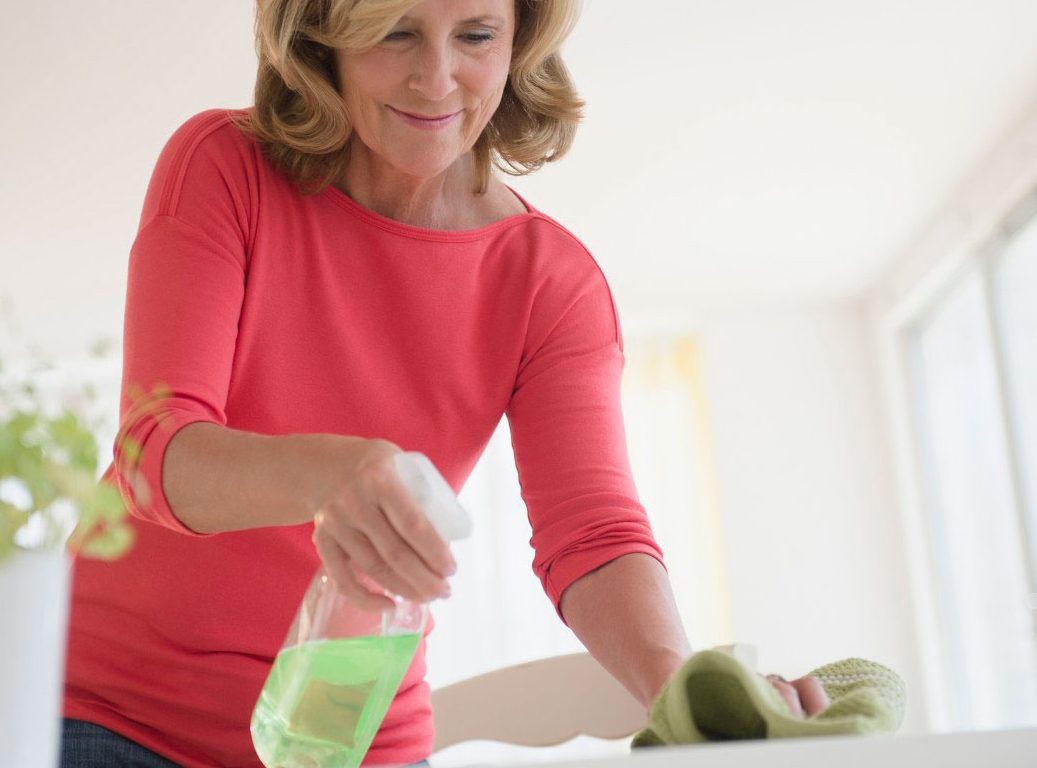Are Your Household Products Safe?

Many people worry chemicals in everyday products cause cancer and other disease. Scientists debate whether some cause health problems. Here's what you should know.
Everyone worries about exposure to toxic chemicals. What about the products you use every day, like household detergents and personal care products?
Liquids and solids in consumer products — called volatile organic compounds, or VOCs — turn into gas when they’re exposed to air and sunlight. They may aggravate or trigger asthma, cancer, reproductive and developmental harm, and damage your liver and nervous system.
Scientists debate how much vapor products actually emit and what levels are safe.
YOU MIGHT ALSO LIKE: What Is Phytophotodermatitis?
If you want to be careful, try the Healthy Living app from the Environmental Working Group (EWG), which evaluated more than 200,000 personal care, cleaning, and food items. You can avoid any product with extras you don’t need, like a fragrance.
A study from the Silent Spring Institute and the University of California, Berkeley, that analyzed VOCs identified methanol as a major offender. So were diethanolamine, formaldehyde, and other chemicals that the state of California has identified as potentially harmful. All of them emanate low-level vapors you might not notice. You can search for the state’s position on various chemicals here.
Overall, the Silent Spring team concluded that art supplies — especially adhesives — general purpose cleaners, and laundry detergents in your home contain the most VOCs.
Methanol
Products that contain methanol include:
- Windshield washer fluid
- Gas line antifreeze
- Carburetor cleaner
- Copy machine fluid
- Perfumes
- Food warming fuel
Other types of fuels
Chronic poisoning from repeated exposure to methanol vapor may produce:
According to California, it may also interfere with fertility.
DEA
Manufacturers put diethanolamine (DEA) in shampoos, cosmetics, liquids, and soaps to create a creamy texture and foaming action. The Food and Drug Administration says it’s safe at current levels of exposure.
If you’d rather avoid the chemical, you’ll need to learn the many ingredients you’ll see on labels that may include it, such as TEA-Lauryl Sulfate.
According to the EWG, it poses a moderate risk of cancer and allergies and earns a score of 10 on a 1 to 10 scale from safest to least safe. California also considers it a carcinogen.
Formaldehyde
Formaldehyde can cause irritation of your skin, eyes, nose, and throat. High levels of exposure may cause leukemia and cancers of the nose throat and sinuses. You can be exposed through:
- Coatings on furniture
- Composite wood products like plywood
- Foam and fiberglass insulation
- Hair straighteners
- Permanent press fabrics
- Gas stoves
- Kerosene space heaters
- Tobacco smoke
- Marijuana smoke
Other VOCs
Mothballs are made of 1,4-dichlorobenzene, which can break down into the toxic vapors hydrochloric acid and carbon monoxide. California has labeled it as a carcinogen.
The Silent Spring study found that consumer products, largely paint removers, still emit tons of methylene chloride every day despite an EPA ban on the use of the chemical in paint strippers in 2019.
Benzene, a known carcinogen, is another common VOC in consumer products, including:
- Paint
- Glue
- Carpet
- Plastics
- Dyes
- Detergents
- Drugs
- Pesticides
One study found benzene in more than half of 108 batches of antiperspirant and deodorant body sprays from 30 brands. Procter & Gamble pulled 17 types of Old Spice and Secret antiperspirant off the shelves at the time.
Be wary of:
- Acetone, found in nail polish remover, furniture polish, and some hobby chemicals
- Ethanol, found in household cleaners and laundry detergents
- Trichlorethylene, found in degreasers, fabric cleaners, glues, and markers
Sodium laurel sulfate (or SLS) and sodium laureth sulfate (or SLES) are used to create foam in a huge array of cleansers, from shampoos and dish soaps to laundry and detergents. They produce a substance called nonylphenol as they biodegrade, which enters water supplies. Nonylphenol has been classified as an endocrine disruptor.
What you can do
To avoid chemicals, you can stick with the simplest, most natural products you can find, or you can make your own. Use the EWG website or app to find products you like.
Use common sense and take action immediately if gasoline, paint stripper, or any toxic chemical spills.
Vapors evaporate into the air and can linger in an indoor area. Open a window. Get children and any person who might be sensitive out of the area.
Sometimes a spill happens nearby, and vapors in groundwater or soil move into homes through cracks in basements and crawl spaces. It’s worth taking the effort to fix any leaks, especially if you have children, elders, or people with sensitivities in your home.
YOU MIGHT ALSO LIKE: Toxic Chemicals During Pregnancy and Breastfeeding
Updated:
December 18, 2023
Reviewed By:
Christopher Nystuen, MD, MBA and Janet O'Dell, RN